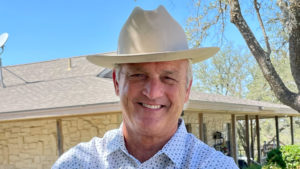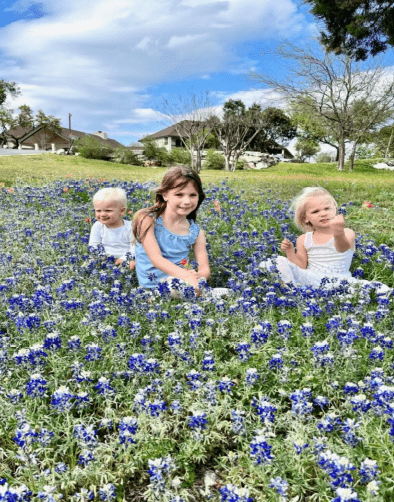
I walked out my front door last week and noticed my pecan trees are starting to bloom. Some decent rains of late have given a boost to the spring growing season here in Central Texas. It’s time to hire a tree trimmer to cut out the dead limbs.
I’ve also noticed bluebonnets, our state flower, carpeting the landscape and along the roadways.
I have always wondered if bluebonnets along the roadway are truly wild, so I did some research. I may not be telling you anything you don’t already know, but I sure learned something.
I discovered that the Texas Department of Transportation (TxDOT) buys around 30,000 pounds of wildflower seed every year and sows them along the highways. TxDOT even delays mowing until early summer to encourage growth and seed shedding unless it is essential for safety.
The Texas State Legislature in 1901 adopted the bluebonnet, scientifically named – Lupinus texensis – as the official flower of Texas. However, the title did not come without a fight from the Pear Cactus and the Cotton plant.
Ultimately, the National Society of Colonial Dames of America – a leader in the field of historic preservation, restoration, and interpretation since 1897 – convinced the legislators to adopt the bluebonnet as a tribute to Texas pioneer women.
They displayed original paintings of bluebonnets on the floor of the legislature and placed bluebonnet floral arrangements on each politician’s desk on the day of the vote. Try doing that with a cotton or cactus plant.
It worked.
Wildflowers along the Texas roadways began after the Texas Highway Department, now TxDOT, was organized in 1917. The big shots noticed that the very first vegetation to reappear along the roadside cuts and fills were wildflowers, including bluebonnets.
In 1932, the department hired its first landscape architect, Jac Gubbels, an immigrant from The Netherlands, to preserve and promote wildflowers along the roadways. He encouraged cities to plant wildflower seeds along the roads two miles outside their city limits as a welcome to visitors.
Gubbels is also responsible for choosing the site plan for Austin’s famous Zilker Park. If you haven’t been there, it’s worth the visit. I walk the trail wrapping around Lady Bird Lake often, and my dog Cash runs wild on the forty-five-acre off – leash dog park.
I also learned that there is no law against picking bluebonnets along the public roadways. State Parks are off limits, as is private property, but other than that, you can pick a bouquet, just don’t pull the plant up the roots.
TxDOT does not encourage the picking of bluebonnets for safety reasons – rattlesnakes and cars being two. Plus, stomping on bluebonnets can damage the flower and make it unable to shed fertile seed for the following year’s growth.
Also note, if you decide to chomp on one, they are considered poisonous and can be toxic for both humans and pets.
Interesting stuff.
The peak time for the bluebonnet bloom is late March through early April. According to the Lady Bird Johnson Wildflower Center, they are expecting a robust crop this year.
I have dozens of pictures of my grandkids standing amongst the bluebonnets. Some of my favorite photos. There is something about a bluebonnet that feels like Texas.
My mother loved bluebonnets, and I think of her a lot this time of year. I’ll pick a few and place them on her grave during the bloom.
Enjoys God’s beauty, with a little help from TxDOT. Just be sure to watch out for rattlesnakes and cars…. and don’t eat one.
***
Todd Howey is a columnist for BrownwoodNews.com whose articles appear on Fridays. Email comments to [email protected].
